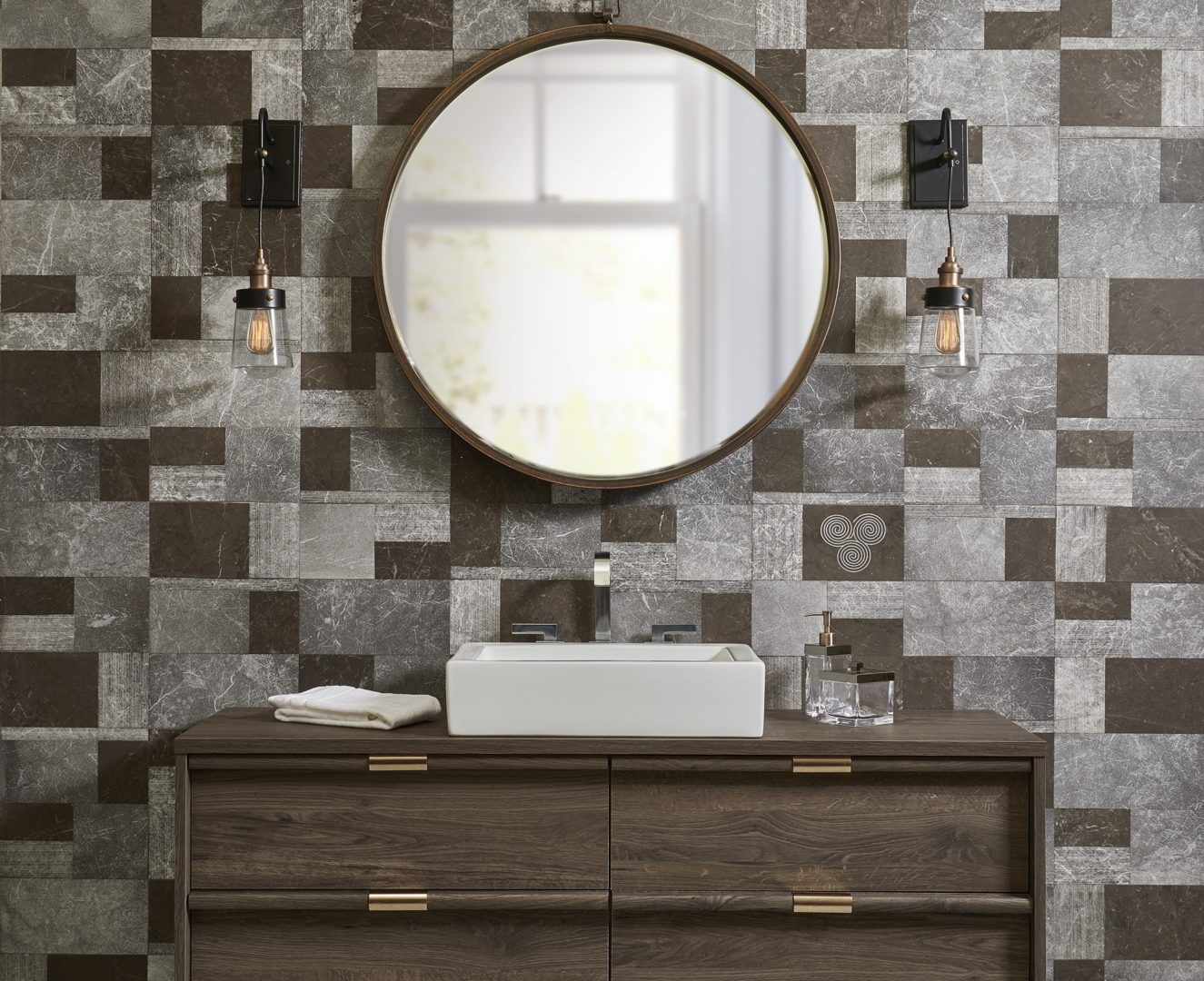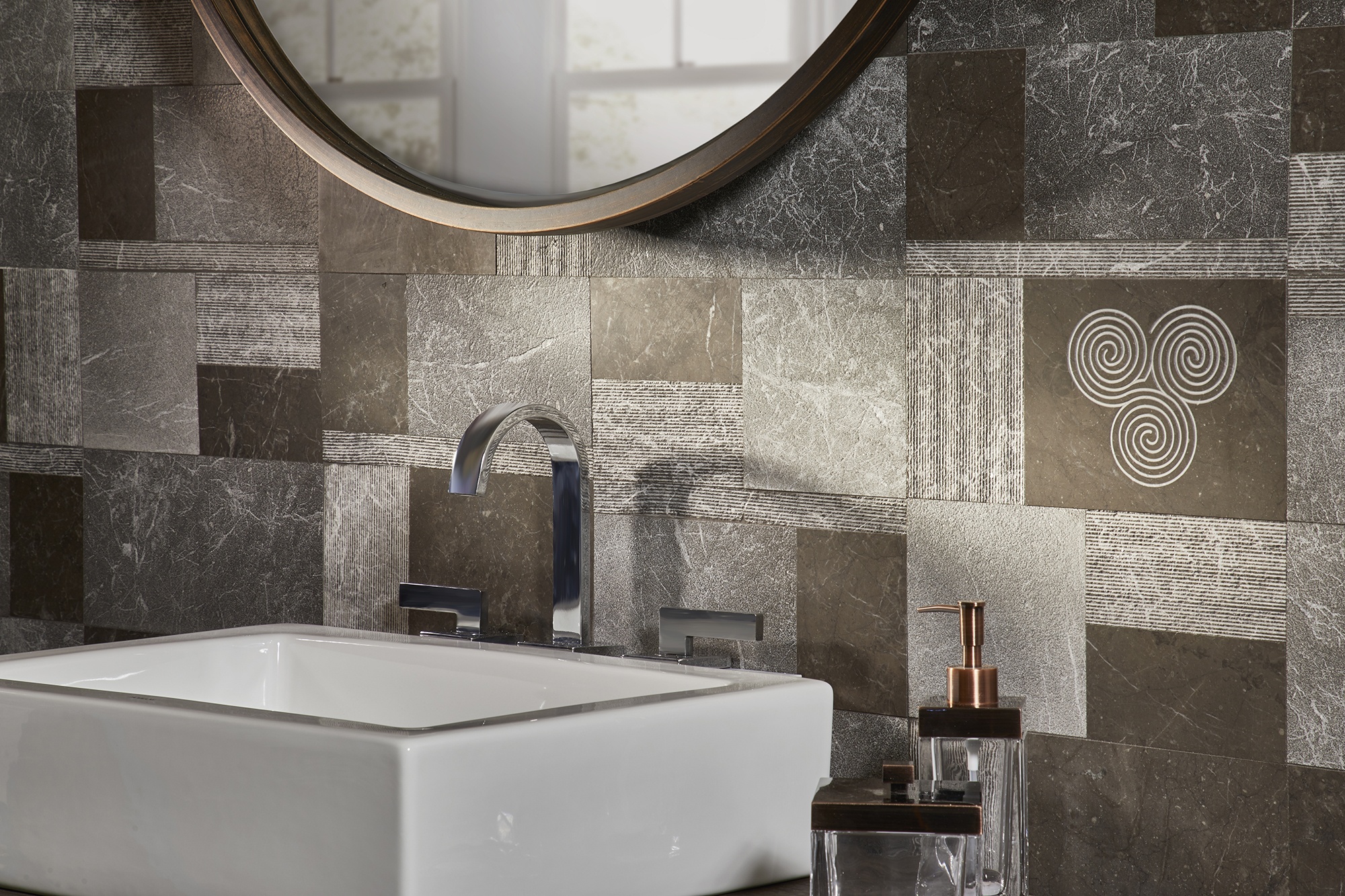Are you familiar with the symbolism behind the finger labyrinth? You may have noticed these ancient symbols featured in our latest designer collection, Kaya by Clodagh.

Kaya by Clodagh, featuring the Ahuta Finger Labyrinth
Without a doubt, these sinuous shapes bring a distinctive “zen” element to spaces, but the Ahuta Finger Labyrinth and it’s larger scale counterpart, Zama, were actually inspired by the age-old tradition of tracing shapes as a means of getting in touch with our innermost selves.

Labyrinth from the Cathedral of San Maritino in Lucca, Italy
Labyrinths have been around since the Bronze Age, and have been discovered on the walls of caves, Greek coins, and even in churches during the Middle Ages. They have been used throughout many different cultures, sometimes as a more formal religious practice, and other times, simply as a method of relaxation, but their true purpose has always remained similar. Labyrinths are considered a metaphor for the journey we each take to find who we truly are; to the center of ourselves, just as the shape can be traced.
The finger labyrinths in the Kaya Collection by Clodagh are meant to be used as a means of meditation through the act of concentrating and being aware. Clodagh suggests using them as small, but powerful daily reminders to remain present in all that you do. The designer notes, “The labyrinth also reflects a ritual. By creating a pattern, we are celebrating ritual. There is no space in your home that requires ritual than your bathroom. Your bathroom is your morning and your evening ritual. The sobriety yet fun nature of these patterns will help you to focus and get your ritual on. We like to use symbolism as visual prompts for mindfulness.
We couldn’t agree more, and while it may be an ancient practice, running your finger along the lines of these labyrinths can act as a form relaxation and prayer in your modern life.

Kaya by Clodagh, featuring the Ahuta Labyrinth













